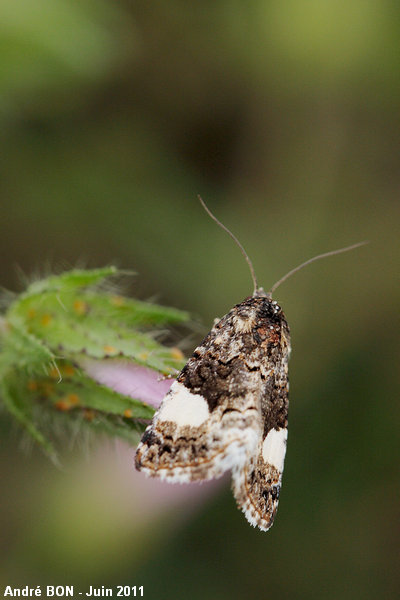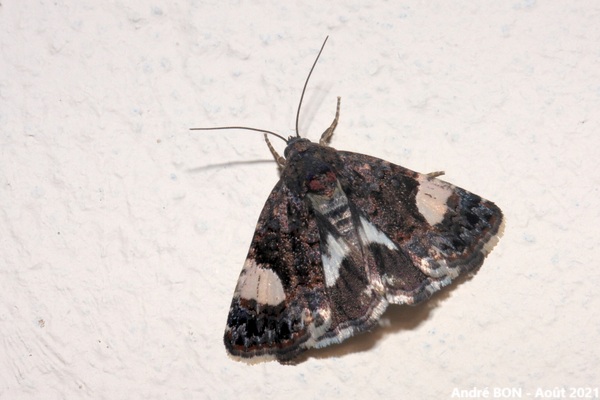

| Four-spotted Moth (Tyta luctuosa (Denis & Schiffermüller, 1775)) |


|
|
Scientific name: Tyta luctuosa (Denis & Schiffermüller, 1775) Common name: Four-spotted Moth Other names: Field Bindweed Moth French name: Noctuelle en deuil, Funèbre Order: Lepidoptera Suborder: Heterocera Family: Noctuidae Subfamily: Catocalinae Wingspan: 22-25 mm. Biotope: Open habitats, sandy or chalky places, meadows, waste lands, dunes. Geographic area: Europe, Asia, North Africa. Introduced to the United States of America to control the proliferation of Field Bindweed (Convolvulus arvensis). Flight time: April to June and then August to September. Number of generations : 2, 3 in the southern regions. Caterpillar: Ochre russet colour with two dark brown interrupted dorsal lines, marked with small white spots. There is a broad pale cream stripe on each lateral side of the body, just below the black spiracles. Host plant: Bindweeds of the Convolvulus genus and in particular Field Bindweed (Convolvulus arvensis) and also Common Plantain (Plantago major). |
The Four-spotted Moth shows brownish black fore wings with a large white patch on the costal edge that ends in a rounded shape. The area close to the apex of the wing is darker and the area close to the anal angle is paler and mottled. The hind wings show a wide black marginal stripe marked with a small white spot next to the anal angle. They are crossed by a broad white median stripe. The basal area is greyish. The fringe of the hind wings shows a thin dark grey line surrounded by a pale colour. Aedia funesta has a more triangular shaped patch on the costal edge of the forewings with a small and thin extension at its tip. The Four-spotted Moth is active during the night but you can observe it on flowers during sunny days. It is attracted to light. The Four-spotted Moth over winters as a pupa inside a hard cocoon. |
| [To know more about the Four-spotted Moth] [Next picture] [Top] |

|
The white patch on the fore wings is enough to tell the Four-spotted Moth apart, however this is a difficulty for the photographer who may gets this area overexposed (and this has happened to me ...) |
| [To know more about the Four-spotted Moth] [Previous picture] [Top] |

|
Attracted to light this Four-spotted Moth entered the house. |